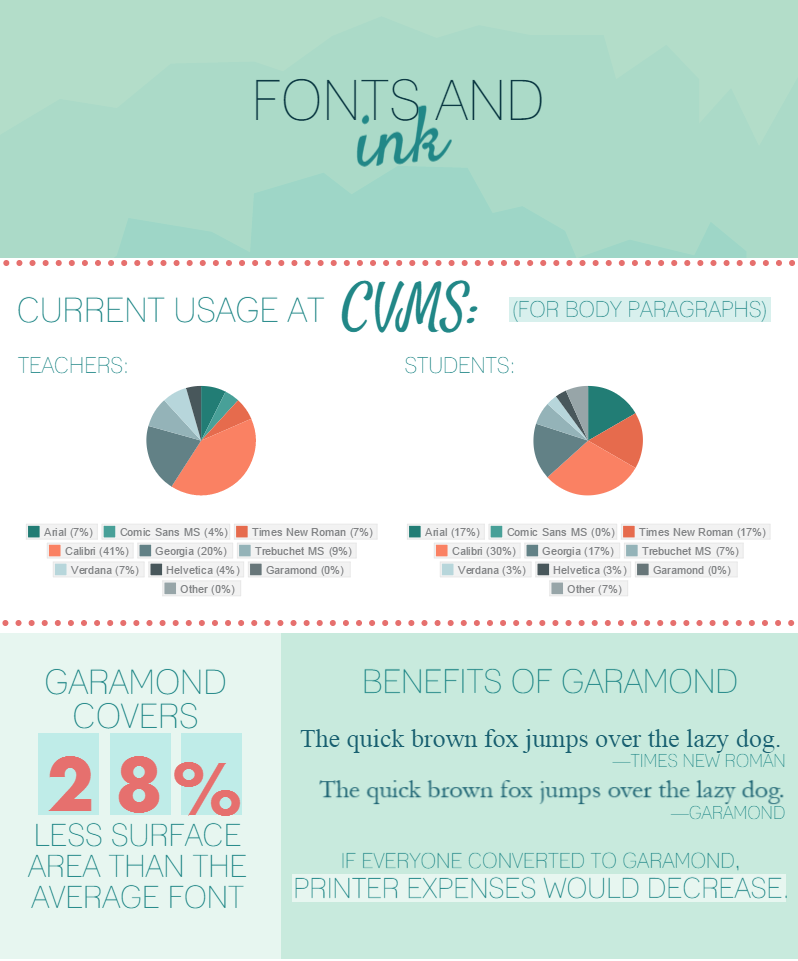Saving Printer Ink

At Canyon Vista, we have a motto to “inspire future leaders.” Students are encouraged to share their ideas and strive to make positive impacts on our school as a whole. One student who has taken this adage to heart is 8th grader Amogh Dambal.
Last fall, Amogh sent an email to our school principal, Ms. Hagerty informing her that Canyon Vista could cut costs in printer ink and toner by encouraging teachers and students to use the font Garamond in printouts. Ms. Hagerty then forwarded the email to teachers and staff.
He cites an article at CNN for the idea. CNN covered 14-year-old student Suvir Mirchandani’s astounding discovery that if his school exclusively used the font Garamond in its printouts, it would save 24% in ink and toner costs. Suvir took his research further to conclude that if applied to the US government, this simple tactic could save our nation $234 million.
“I think that if the school can save money on printer ink, then we can have money for other things which benefit the learning environment,” Amogh says.
However, according to other sources, using Garamond is not as an effective way to cut costs as it initially seems. For one, while Garamond’s surface area is 28% less than the average font’s, its height is also 15% shorter. Ink savings could just as easily be gained by scaling down font size.
Other staff members of Canyon Vista, instead of worrying about which font to use, have simply decided to forgo printouts and switch to Google Classroom, an online learning portal. Instead of manually distributing papers, teachers can post assignments to a classroom. It saves ink, students can’t lose assignments, and don’t even have to worry about bringing a pencil to class.
Mrs. Martin and Mrs. Fritch are among the early converters to Google Classroom at Canyon Vista. Mrs. Martin testifies that switching “was so worth it and I’ll never go back to paper.” As well as being eco-friendly, Google Classroom is a huge help for grading. Teachers no longer have to organize overwhelming piles of paper or carry them home to grade, nor do they have to postpone lesson planning to make copies of assignments. “I can click revision history and see if students really revised and edited,” says Mrs. Martin, adding that “students find Google Classroom more engaging than paper. They just generally appreciate their schoolwork being more like the work they’ll do as adults—largely online.”
Whether Mustangs are choosing to conserve printer ink and toner by switching fonts or moving their schoolwork entirely to the cloud, their efforts are fully appreciated. Students and teachers such as Amogh and the LA department, who take initiative to speak out and share their ideas, are part of the reason why Canyon Vista is a successful learning environment.



















